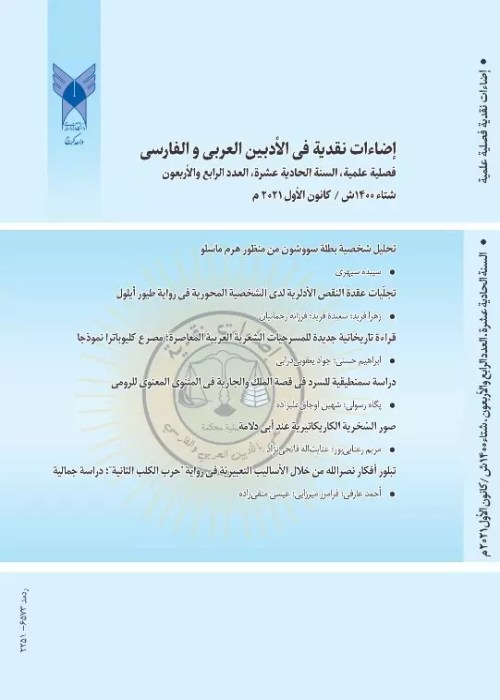A Comparative Analysis of the Tradition and Modernity in Arabic Dramas: A Case Study of the play 'Death of Cleopatra'
Researchers believe that the first steps of the Arabic drama’s art, especially poem dramas, were taken by the Lebanese writer Marun al-Naqqash, the Lebanese writer. Although this art had weaknesses at the beginning, it can be said that its first steps were by and large acceptable. They also believe that its early stages of formation carried out by Ahmed Shawqi, the Egyptian genius poet, whose knowledge of western literature, especially French literature, strengthened his motivation to benefit from this new literary genre. Fascinated in the French literature and especially dramatic literature, Ahmed Shawqi pursued the way of the great playwrights such as Pierre Corneille, Racine and Moliere in his works. He introduced dramatic stories, as a new literary genre into the Arabic language and turned to historical poems, a way that enhanced the status of historical poem dramas. In the present article "The Death of Cleopatra" is chosen among Shawqi's historical plays. This play was written in 1927 to defend a character that Ahmed Shawqi imagined the history distorted her face. In this play, he defends surprisingly Cleopatra, the queen of the pharaonic era, and portrays her as a patriot who is infatuated with her country, Egypt. In his opinion, Cleopatra was wrongly judged by western historians. They portrayed her as a reveler and capricious woman who does not care about the interests of her country. In his historical dramas, Ahmed Shawqi is not satisfied only with plotting the events of history; rather, his goal in representation historical events and characters is to use them symbolically in order to raise moral, social, political and even psychological issues. He presents an art that is structurally complete and possessed the features of the show. Therefore, it can be said that the historical poem dramas were created and flourished by this revivalist poet under the influence of the greats of this field, such as Racine, Pierre Corneille, Moliere, and Shakespeare.
- حق عضویت دریافتی صرف حمایت از نشریات عضو و نگهداری، تکمیل و توسعه مگیران میشود.
- پرداخت حق اشتراک و دانلود مقالات اجازه بازنشر آن در سایر رسانههای چاپی و دیجیتال را به کاربر نمیدهد.


